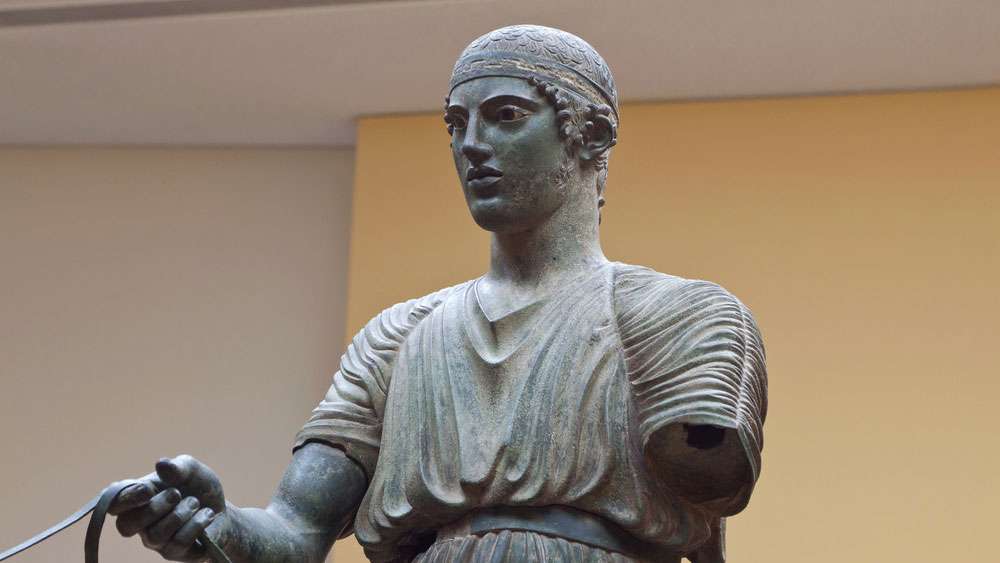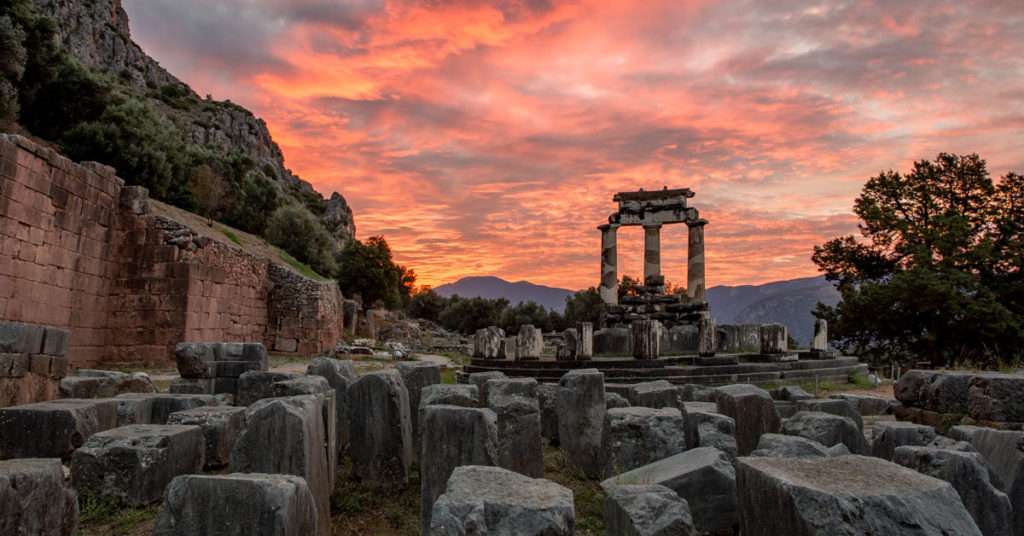Delphi, one of the high points of a visit to Greece, is about 180 kilometers northwest of Athens, lies on Mount Parnassus’s slopes, and is today a UNESCO World Heritage Site. We drive through the fertile plain of Boeotia, passing by Thebes’ city, related to the tragedy of King Oedipus, and Arachova, a picturesque mountain village known for the traditional rugs and carpets made here, as well as for being a very popular winter skiing resort.
Delphi was the center of the world (omphalos) in the ancient Greeks’ eyes: according to myth, it was the meeting point of two eagles released by Zeus, one to the East and one in the West. The oracle was dedicated to God Apollo and Pythia, the High-Priestess, was the medium to deliver the prophecy to the interested people. Since the 6th century B.C. Delphi was the religious center and symbol of the unity of the Greeks. Still, soon its reputation exceeded Greece’s borders, and people from all over the known ancient world arrived here asking Apollo’s advice.

Arriving at Delphi from Athens, one actually follows an ancient pilgrim’s steps. The first thing to see is the Castalian spring, and two monumental fountains’ remains, with recesses in the rocks for votive offerings. Here, the Pythia (priestess) washed, as did those wishing to consult the oracle, purifying themselves before making their way to the Temple of Apollo.
Close to the Castalia is a fourth-century-BC Temple of Athena, and the Tholos, a circular building of about 380 B.C. Though its exact function is unknown, it is regarded as a Classical architecture masterpiece. At the sanctuary of Apollo, you will see the most important building, the Doric Temple, but also the Treasury of the Athenians, the Theater, and the Stadium.
The Archaeological Museum of Delphi, one of the most important in Greece, exhibits the Delphic sanctuary history. Its rich collections are comprised primarily of architectural sculptures, statues, and minor objects donated to the sanctuary. These reflect its religious, political, and artistic activities from its early years in the eighth century BC to its decline. Among the exhibits, the famous bronze Charioteer, the sacred symbol of Delphi, the omphalos, the Sphinx of the Naxians, the marble statue of Antinoos!

